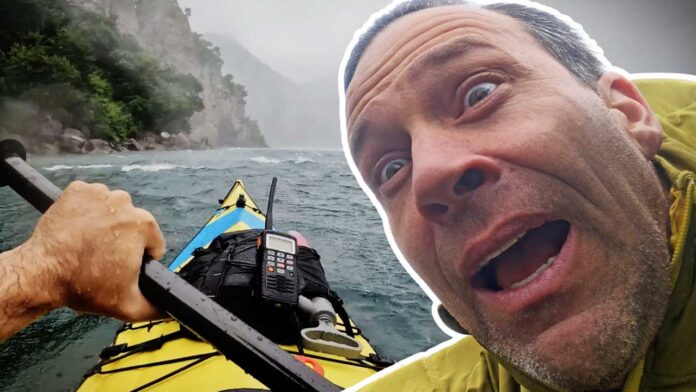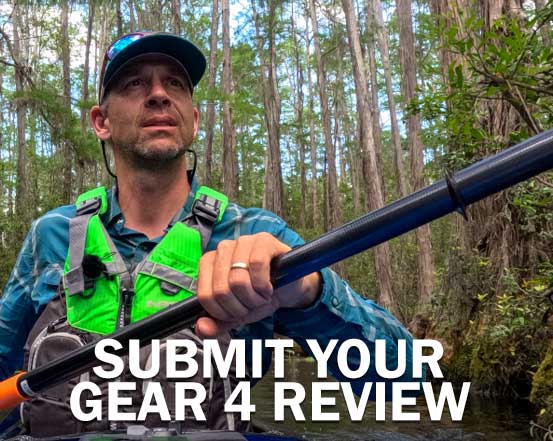Kayaking in wind is one of the most limiting factors for a lot of kayakers. It is also just a simple fact of nature. Some locations will be windier, and sometimes you will have to deal with stronger winds. So here is everything you need to know about kayaking in windy conditions.
How Do We Measure Wind?
To start off, it is useful to know how we measure wind speed. Well, wind speed is measured in knots, miles (mph), or kilometers per hour (kmh). One knot is equivalent to 1.15 mph or 1.85 kmh. In the USA it is most common to use miles per hour.
How Does Wind Affect the Water?
As a general rule, any wind above 15-20 mph is too strong to kayak in. This wind strength makes the water too choppy and is too strong for you really to make any headway. In fact, you will most likely just get beaten up by the wind! Obviously, this varies a bit depending on your skill level or the bodies of water you will be paddling on.
In windy conditions, larger bodies of water are harder to kayak on as they will start to get waves. The size of the waves is impacted by the fetch. This is the length of water that is impacted by the wave before it reaches you. The more water that the wind has to travel over before it reaches you, the bigger the wave.
Protected and sheltered bodies of water, for example, small rivers between mountains, are impacted less by the wind. They will be unlikely to have waves and will be easier to kayak on when it is windy.
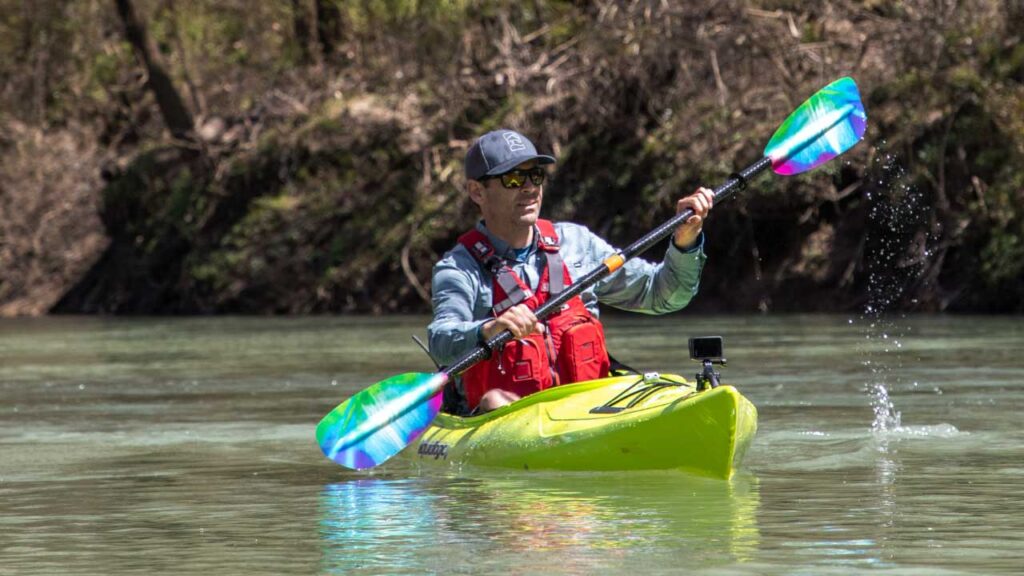
How Does Your Kayak Travel Through the Water?
To really understand how wind impacts your ability to kayak you should know how kayaks travel through water.
Most kayaks are designed with a bow keel, and this cuts through the water. As the kayak travels through the water, water hits the bow of the kayak. This effectively holds the bow in place due to the pressure. This pressure is maintained all the way through to the center point of the boat, which is the widest part. Beyond that point, towards the stern of the kayak, there is less water pressure. Therefore the stern can move more freely. This is why steering usually occurs in the stern.
What Happens When a Side/Beam Wind Hits Your Kayak?
As we just established, the stern of the kayak moves more freely in the water. Therefore when a side wind hits the kayak, it is the stern that will be pushed further than the bow. This will cause the kayak to turn into the wind, something we call ‘weather cocking’.
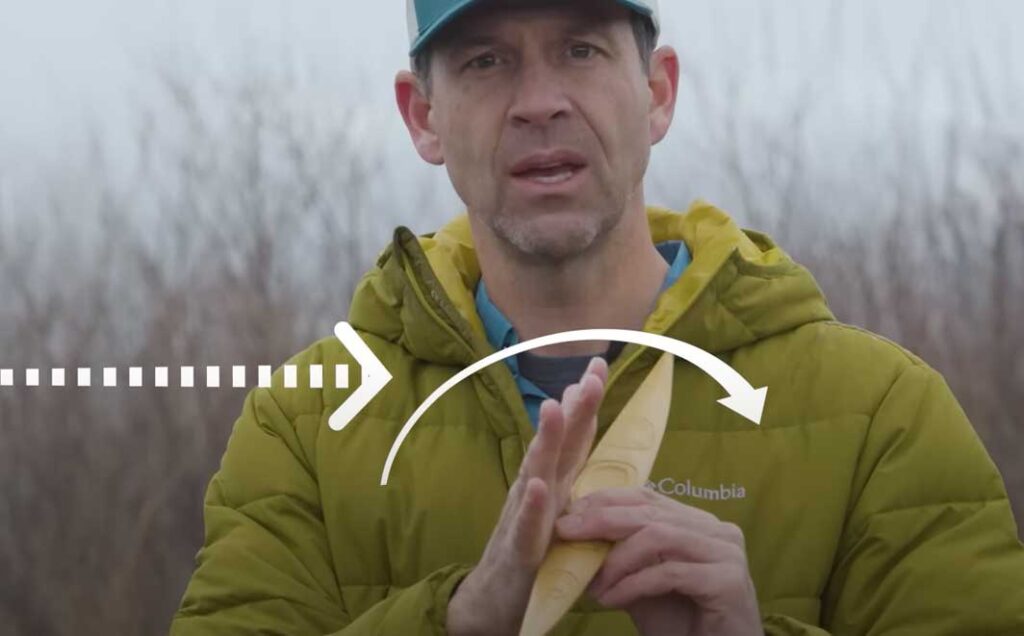
How Can You Stop Weather Cocking?
The extent to which your boat weather cocks will depend on the strength of the wind. In strong winds, where the stern is pushed aggressively you will need something to keep the stern in place.
And that is where rudders and skegs come in handy. The main purpose of a rudder or skeg is to drop down into the water and keep the stern from being pushed around. When dealing with wind they will help you keep your course. Without these, you will need to sweep harder on one side to keep correcting your boat from weather cocking. This quickly gets exhausting!
I wrote a full article on skegs and rudders. Check out my Kayak Rudder or Kayak Skeg article!
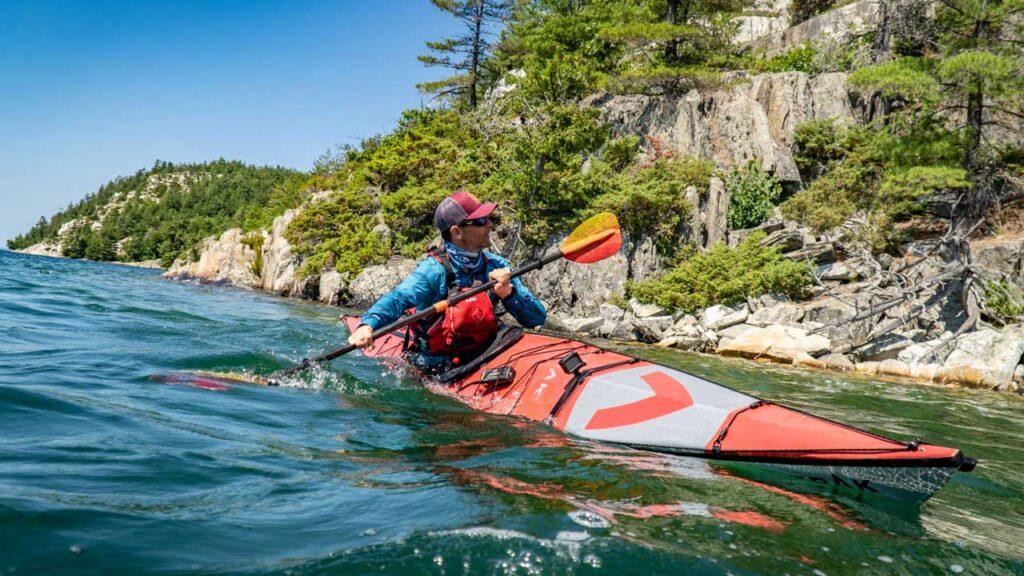
The other way you can prevent weather cocking is by tilting your kayak. This only works for rec/touring kayaks, sea kayaks, or any kayak that is slightly less wide. When you tilt your kayak, whether there is wind or not, it will turn away from the side you are tilting towards. So, in a beam wind, you can counter the effects of weather cocking by tilting into the wind. This is ideal for short periods of side wind. On a longer journey, however, this will quickly become too tiring to maintain. So for longer trips in a beam wind rudders and skegs are the best option.
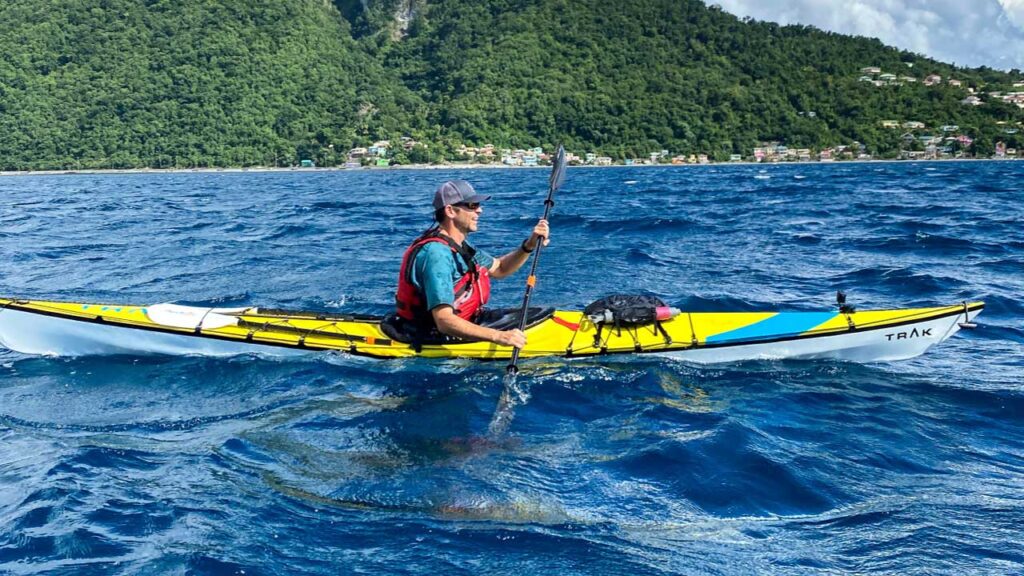
What Happens in a Head Wind?
Headwinds suck when kayaking! But to go a little deeper, an average paddler, paddling at a sustained rate, will travel between 2-4 miles per hour. A strong enough headwind can provide enough resistance against a kayaker to significantly slow or stop them. For example, a headwind of between 15-20 mph can provide about 3-4 mph wind resistance on the kayaker. This will effectively stop them from moving forwards. At this point, it is hardly worth going to the effort of going kayaking.
In slightly lower winds you might significantly be slowed down, but putting in the extra effort can keep you traveling forwards at a worthwhile speed. So then taking your kayak out is worth the effort.
How can you Deal With a Headwind?
Before kayaking in a strong headwind you do need to think about how worthwhile going out really is. If the wind is so strong that you won’t be able to move forwards against it, there is little point. By knowing the wind speed and your average kayaking speed you can work out how realistic it is for you to go kayaking. Sometimes you might be forced to put your gear away, find another place or try again tomorrow!
Another thing to think about when kayaking with a strong headwind is what your fastest route might be. Sometimes it may be faster to kayak further, but end up finding a more sheltered route, instead of grinding it out against the wind.
A good way to learn in-depth about strong wind is to take a sea kayaking course. The wind has a very strong effect on the sea. Learning how best to deal with that will really strengthen your kayaking skills.
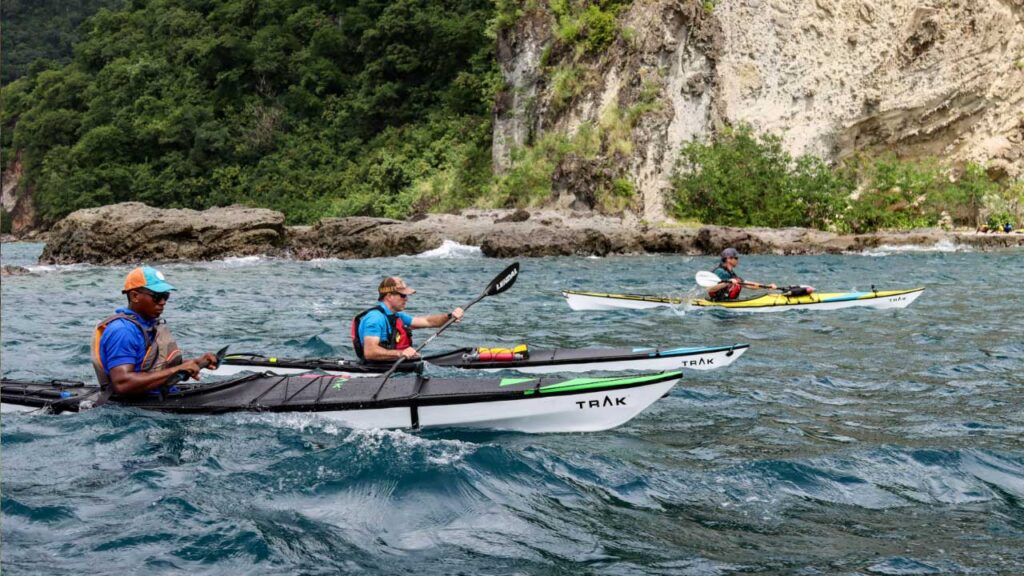
What Happens to Your Kayak in a Tailwind?
Tailwinds tend to be friendly winds for kayakers. These will give you a boost instead of brakes!
Depending on the body of water you are in, tailwinds can be accompanied by waves. These waves can be surfed and will give you a fun, speedy boost. So you really can travel at some quite amazing speeds.
However, as the waves come from behind, you cannot see them. When your body gets surprised by the movements you can start to feel sea sickness. Whilst this doesn’t happen all too often, it can happen to anyone. The best course of action, if it does, is to turn into the wind. That way you can watch the waves coming to calm yourself down.
Things to Note When Kayaking in Windy Conditions
Head, side, and tailwinds are the main winds that you will face when kayaking. But there are a few other things to note about kayaking in windy conditions.
Areas Often Have Common Wind Themes
Different areas that you kayak tend to have common or recurring wind themes. For example, in Hood River Oregan where we are located, the winds are very predictable and rush from West to East up the Colombia River Gorge. That means you know what to expect and have to plan around that. Things like seasons and the time of the day also impact the wind you can expect.
It is always really important to know the wind themes of the place you are choosing to paddle. That way you can plan around them. On top of that, you should aim to discover the forecast of the day. To do that there are some great tools you can use such as the Windy app. This shows you the wind forecast and the current wind conditions for any location in the world.
Capsizing in the Wind
When capsizing in the wind your boat and paddles will be pushed down the river much faster than you. That is because you will be below the surface of the water but your kayak and paddle won't be. They will be on the faster moving, top layer of water and therefore blown much quicker down the river.
This is important to know because it means that if you do capsize in the wind you have to grab onto your boat and paddle. Otherwise, before you know it they are gone and there is no way you are going to catch them!
This is another good reason why, in windy conditions, it is essential that you are paddling with other people. And people whom you can count on. You will be each other's lifeline.
Bring a Communication Device
Wind can be the biggest hindrance in your kayaking plans. It might stop you from getting to your next location, or hinder you from going back to your vehicles. That means it is essential that you bring some sort of reliable communication device with you, especially when kayaking in windy conditions.
You also need to leave a float plan with somebody who is not joining your trip. That way they know where you are going, what the plan is, and where to look for you if you don’t show up.
Get Confident by Following a Sea Kayaking Course
Paddling in the wind really is a challenging thing to do. The windier it gets and the more exposed the water you are paddling in, the more difficulties the wind brings. So if you really want to paddle in very exposed locations or in strong winds you will really benefit from a sea kayaking course. Not just to learn how to deal with strong winds, but also to learn self-rescue skills, and to deal with accidents, capsizes, etc. Gaining that knowledge and expertise can bring you a high level of confidence when kayaking in windy conditions.

PFDs/Life Jackets: NRS Zen PFD, NRS Odyssey PFD (Touring and Rec)
Kayaks: Trak Kayaks, Liquid Logic Saluda
Paddle: Aqua-Bound Manta Ray Carbon 2-piece
Shirts and Tops: NRS Silkweight Short sleeved shirt, NRS Silkweight Long-Sleeve Shirt
Paddling Shorts: NRS Benny Board Shorts
Sunglasses: Wiley X



